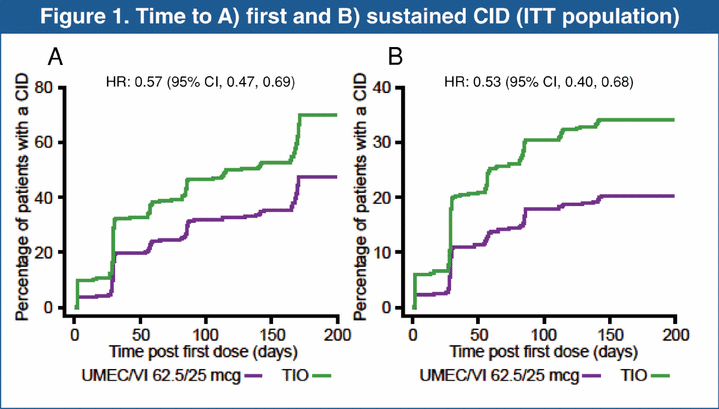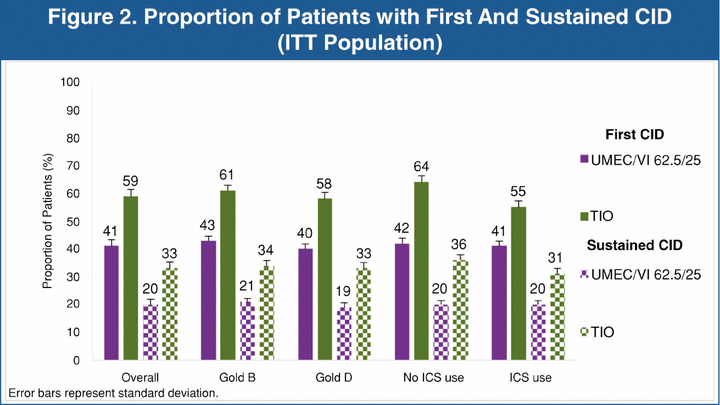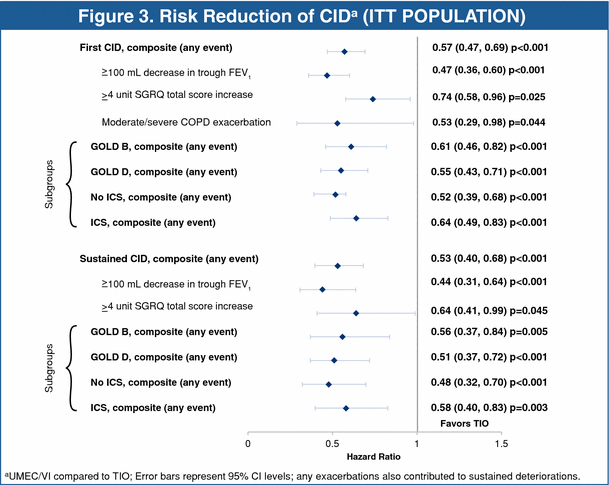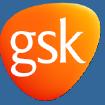Form 8-K THERAVANCE INC For: May 20
UNITED STATES
SECURITIES AND EXCHANGE COMMISSION
Washington, DC 20549
FORM 8-K
Current Report Pursuant
to Section 13 or 15(d) of the
Securities Exchange Act of 1934
Date of Report (Date of earliest event Reported): May 20, 2015
THERAVANCE, INC.
(Exact Name of Registrant as Specified in its Charter)
|
Delaware |
|
000-30319 |
|
94-3265960 |
|
(State or Other Jurisdiction of |
|
(Commission File Number) |
|
(I.R.S. Employer Identification |
951 Gateway Boulevard
South San Francisco, California 94080
(650) 238-9600
(Addresses, including zip code, and telephone numbers, including area code, of principal
executive offices)
Check the appropriate box below if the Form 8-K filing is intended to simultaneously satisfy the filing obligation of the registrant under any of the following provisions (see General Instruction A.2. below):
o Written communications pursuant to Rule 425 under the Securities Act (17 CFR 230.425)
o Soliciting material pursuant to Rule 14a-12 under the Exchange Act (17 CFR 240.14a-12)
o Pre-commencement communications pursuant to Rule 14d-2(b) under the Exchange Act (17 CFR 240.14d-2(b))
o Pre-commencement communications pursuant to Rule 13e-4(c) under the Exchange Act (17 CFR 240.13e-4(c))
Item 7.01. Regulation FD Disclosure.
On May 20, 2015, at the Annual Congress of the American Thoracic Society in Denver, Colorado, GlaxoSmithKline (GSK) presented a poster containing information from a post hoc analysis of the ZEP117115 trial (NCT01777334), a 24-week, randomized, parallel-group study of once-daily, inhaled UMEC/VI 62.5/25 mcg (delivering 55 mcg and 22 mcg respectively) compared with tiotropium 18 mcg (delivering 10 mcg). The poster is furnished as Exhibit 99.1 to this Current Report on Form 8-K and is incorporated by reference herein. UMEC/VI has been developed under the LABA collaboration agreement between GSK and Theravance, Inc.
The information disclosed in this Item 7.01 is being furnished and shall not be deemed “filed” for purposes of Section 18 of the Securities Exchange Act of 1934, as amended (the “Exchange Act”), or otherwise subject to the liabilities under that section, nor shall it be deemed incorporated by reference in any filing under the Securities Act of 1933, as amended, or the Exchange Act except as expressly set forth by specific reference in such filing.
Item 9.01. Financial Statements and Exhibits.
(d) Exhibits
99.1 Poster
SIGNATURE
Pursuant to the requirements of the Securities Exchange Act of 1934, as amended, the registrant has duly caused this report to be signed on its behalf by the undersigned hereunto duly authorized.
|
|
THERAVANCE, INC. | |
|
|
|
|
|
Date: May 20, 2015 |
By: |
/s/ Eric d’Esparbes |
|
|
|
Eric d’Esparbes |
|
|
|
Vice President and Chief Financial Officer |
Exhibit 99.1
Can Dual Long-acting Bronchodilator Therapy Prevent Clinically Important Deteriorations In Chronic Obstructive
Pulmonary Disease? A Post Hoc Analysis Of The ZEP117115 Trial
Poster No.
Singh D(1), Maleki-Yazdi R(2), Tombs L(3), Naya I(3), Church A(4), Iqbal A(4)
(1)University of Manchester, Medicines Evaluation Unit, University Hospital of South Manchester NHS Foundation Trust, Manchester, UK; (2)Division of Respiratory Medicine, Women’s College Hospital, University of Toronto, Ontario, Canada; (3)GlaxoSmithKline, Stockley Park, UK; (4)GlaxoSmithKline, Research Triangle Park, NC, USA
Introduction
· Combinations of long-acting muscarinic antagonists and β2-agonists (LAMA/LABAs) have been shown to be beneficial in improving lung function and other outcomes in patients with moderate to severe chronic obstructive pulmonary disease (COPD) compared with LAMAs alone.(1),(2)
· The LAMA/LABA combination, umeclidinium and vilanterol (UMEC/VI) is an approved maintenance treatment for COPD in the US, Canada, the EU and several other countries.(3)-(5)
· The ability of mono or dual long-acting bronchodilator therapy to reduce the risk of rapid deterioration in COPD is not well characterized.
· This study assessed the effect of UMEC/VI and tiotropium on recognized deteriorations in disease control by examining the incidence of COPD exacerbations, and declines in lung function and health status from baseline using a new composite endpoint of clinically important deterioration (CID).
Objectives
· The objective of this post hoc analysis of data from a large Phase III, randomized trial was to investigate whether once-daily, inhaled UMEC/VI 62.5/25 mcg delayed time to first and sustained CID, compared with tiotropium (TIO) in patients with COPD.
Methods
Study design and treatments
· The ZEP117115 trial(6) (NCT01777334) was a double-dummy, 24-week, randomized, parallel-group study of once-daily, inhaled UMEC/VI 62.5/25 mcg (delivering 55 mcg and 22 mcg respectively) compared with TIO 18 mcg (delivering 10 mcg).
· Key inclusion criteria included a diagnosis of symptomatic COPD, modified Medical Research Council Dyspnea Scale score >2, post-bronchodilator forced expiratory volume in one second (FEV1) >70% predicted and FEV1/forced vital capacity <0.70.
· Post hoc analysis of deterioration from baseline in health status occurred at 3 visits (4, 12, and 24 weeks) and lung function at 7 visits post randomization using the threshold defined by the minimum clinically important difference.(7),(8)
First CID, composite endpoint defined as any of the following:
· Decrease of >100 mL from baseline in trough FEV1; or deterioration in health-related quality of life defined as >4 unit increase from baseline in St George’s Respiratory Questionnaire (SGRQ) total score; or the occurrence of an on-treatment moderate/severe COPD exacerbation.
Sustained CID, a composite endpoint defined as any of the following:
· A decrease of >100 mL from baseline in trough FEV1; or SGRQ total score increase >4.0 units from baseline; on 2 consecutive visits at least 4 weeks apart or for >50% of all available subsequent visits or a moderate/severe COPD exacerbation (defined as worsening of COPD symptoms requiring the use of any additional treatment other than study drug or rescue albuterol).
· Analyses were performed on the intent-to-treat (ITT) population and subgroups categorized by Global initiative for chronic Obstructive Lung Disease (GOLD) category (GOLD B and D) and inhaled corticosteroid (ICS) use/non-use.
Results
Patient demographics
· The ITT population (randomized and receiving at least one dose of study medication) comprised 454 and 451 patients in the UMEC/VI 62.5/25 mcg and TIO groups, respectively.
· Patient demographics and baseline characteristics were similar across treatment groups (Table 1).
· A total of 188 (41%) and 266 (59%) patients from UMEC/VI 62.5/25 mcg and TIO, groups respectively, had at least one CID in the assessment period.
· Sustained CID was observed in 90 (20%) and 150 (33%) of patients in the UMEC/VI 62.5/25 mcg and TIO groups, respectively.
Table 1. Summary of Patient Demographics and Baseline Characteristics (ITT Population)
|
|
|
UMEC/VI 62.5/25 |
|
TIO |
|
|
|
|
(N=454) |
|
(N=451) |
|
|
Age (years) |
|
61.9 (8.41) |
|
62.7 (8.50) |
|
|
Sex, n (%) |
|
|
|
|
|
|
Male |
|
310 (68) |
|
303 (67) |
|
|
Current smoker at screening(a), n (%) |
|
270 (59) |
|
243 (54) |
|
|
Smoking pack-years(b), |
|
44.1 (24.4) |
|
44.4 (25.0) |
|
|
Baseline FEV1, L |
|
1.25 (0.49) |
|
1.25 (0.49) |
|
|
Reversible to albuteroll(c),(d) n (%) |
|
454 (13) |
|
451 (14) |
|
|
Reversible to albuterol and ipratropium, (c),(d) n (%) |
|
452 (22) |
|
449 (22) |
|
|
GOLD stage, n (%) |
|
|
|
|
|
|
B |
|
178 (39) |
|
175 (39) |
|
|
D |
|
276 (61) |
|
276 (61) |
|
|
Concurrent ICS use(e), n (%) |
|
|
|
|
|
|
Yes |
|
247 (54) |
|
237 (53) |
|
|
No |
|
207 (46) |
|
214 (47) |
|
|
SGRQ total score |
|
49.0 (17.1) |
|
48.6 (16.8) |
|
|
Exacerbations(f), n (%) |
|
|
|
|
|
|
Required no corticosteroid and/or antibiotic |
|
18 (4) |
|
26 (6) |
|
|
Required corticosteroid and/or antibiotic |
|
70 (15) |
|
80 (18) |
|
|
Required hospitalization |
|
34 (7) |
|
28 (6) |
|
Values are reported as mean (SD) unless otherwise stated. (a) Reclassified: subject reclassified as current smoker if smoked within 6 months; (b) Smoking pack-years = (Number of cigarettes smoked per day/20) x number of years smoked; (c) reversibility was defined as (an increase in FEV1 of >12% and >200 mL following administration of albuterol; (d) UMEC/VI 62.5/25 mcg, n= 452; TIO, n=449; (e) ICS use was defined as those subjects who were currently taking ICS medications at the Screening Visit; (f) patients experiencing >1 exacerbations during the 12 months prior to screening; SD, standard deviation
Time to first and sustained CID
· UMEC/VI significantly reduced the risk of both a first and sustained CID compared with TIO (P<0.001; Figure 1).

CI, confidence interval; HR, hazard ratio.
Proportion of patients with first and sustained CID
· The proportion of patients experiencing a first and sustained CID was reduced in all subgroups with UMEC/VI 62.5/25 mcg, compared with TIO (Figure 2).
· A reduction in the proportion of patients experiencing a first decrease from baseline in trough FEV1, an increase from baseline in SGRQ total score or COPD exacerbation was demonstrated with UMEC/VI 62.5/25 mcg, compared with TIO.
· Similar results were seen for sustained CIDs (Table 2).

Table 2. Summary of First and Sustained CID (ITT Population)
|
|
|
UMEC/VI 62.5/25 |
|
TIO |
|
|
Deterioration criteria |
|
(N=454) |
|
(N=451) |
|
|
|
|
|
|
|
|
|
First deterioration |
|
|
|
|
|
|
Composite (any event) |
|
188 (41) |
|
266 (59) |
|
|
>100 mL decrease in trough FEV1 |
|
95 (21) |
|
170 (38) |
|
|
>4 unit SGRQ total score increase |
|
105 (23) |
|
131 (29) |
|
|
Moderate/severe COPD exacerbation |
|
16 (4) |
|
29 (6) |
|
|
Sustained deterioration |
|
|
|
|
|
|
Composite (any event)(a) |
|
90 (20) |
|
150 (33) |
|
|
Sustained >100 mL decrease in trough FEV1 |
|
42 (9) |
|
83 (18) |
|
|
Sustained >4 unit SGRQ total score increase |
|
34 (7) |
|
51 (11) |
|
All data are presented as n (%); (a) any exacerbations also contributed to sustained deterioration.
Risk of first and sustained CID
· The risk of a first and sustained CID and individual components was statistically significantly reduced with UMEC/VI 62.5/25 mcg compared with TIO (Figure 3).
· Similar reductions in the risk of a first and sustained CID were seen in all subgroups (Figure 3).

· In the ZEP117115 trial the overall incidence of AEs and SAEs was similar between treatment groups.
Conclusions
· In the 6-month ZEP117115 trial(6) in moderate-to-very severe patients with COPD, a priori analyses demonstrated sustained increases in efficacy with UMEC/VI versus TIO.
· In this post hoc analysis of data from this trial, dual bronchodilation with UMEC/VI reduced the risk of a first and sustained CID and each of the components, i.e. a decrease in trough FEV1, increase in SGRQ total score and a moderate/severe exacerbation versus TIO.
· UMEC/VI also reduced the risk of a first and sustained CID in both GOLD subgroups and in patients with and without concurrent ICS therapy compared with TIO.
· Prospective studies are now needed to confirm these findings.
References
(1) Decramer M et al. Lancet Respir Med. 2014; 2: 472-86; (2) Mahier DA et al. Thorax. 2012; 67: 781-8; (3) GSK ANORO™ ELLIPTA® prescribing information, https://www.gsksource.com/gskprm/htdocs/documents/ANORO-ELLIPTA-PI-MG.PDF [accessed February 2015]; (4) GSK ANORO™ ELLIPTA® summary of product characteristics. http://www.medicines.org.uk/emc/medicine/28949#INDICATIONS [accessed February 2015]; (5) 3. Blair HA & Deeks ED. Drugs 2015;75:61—74; (6) Maleki-Yazdi MR, et al. Respir Med 2014; 108:1752-60; (7) Donohue et al. COPD. 2005; 2(1):111-24; (8) Jones et al. COPD. 2005; 2(1):75-9.
Acknowledgements
· The presenting author (DS) declares the following real or perceived conflicts of interest. DS has received sponsorship to attend international meetings, honoraria for lecturing or attending advisory boards and research grants from various pharmaceutical companies including Almirall, AstraZeneca, Boehringer Ingelheim, Chiesi, Genentech, GSK, Glenmark, Johnson and Johnson, Merck, NAPP, Novartis, Pfizer, Skypharma, Takeda, Teva, Therevance and Verona. MRM-Y acted as a consultant for Almirall, AstraZeneca, Boehringer-Ingelheim, Forest Laboratories, GSK, Novartis, Merck, Ono Pharmaceuticals and Pfizer. LT, AC and AI are employees of GSK and hold stocks/shares in GSK. LT, AC ,IN and AI are employees of GSK and hold stocks/shares in GSK.
· This study was funded by GSK (clinicaltrials.gov: NCT01777334, ZEP117115).
· Editorial support (in the form of writing assistance, assembling tables and figures, collating author comments, grammatical editing and referencing) was provided by Joanne Ashworth, Fishawack Indicia Ltd, UK, and was funded by GSK.
|
|
|
|
Presented at the Annual Congress of the American Thoracic Society (ATS), Denver, CO, USA, May 15–20, 2015
Serious News for Serious Traders! Try StreetInsider.com Premium Free!
You May Also Be Interested In
- Form 8.3 - Lok’n Store Group PLC
- Coveo Joins the MACH Alliance, Enabling More Businesses to Leverage Best-in-Breed Composable AI Technology to Meet Customers' Evolving Expectations and Drive Business Value
- GRI Bio to Present at LIVE! with Webull Corporate Connect: Virtual Biotech Investment Webinar
Create E-mail Alert Related Categories
SEC FilingsSign up for StreetInsider Free!
Receive full access to all new and archived articles, unlimited portfolio tracking, e-mail alerts, custom newswires and RSS feeds - and more!



 Tweet
Tweet Share
Share

